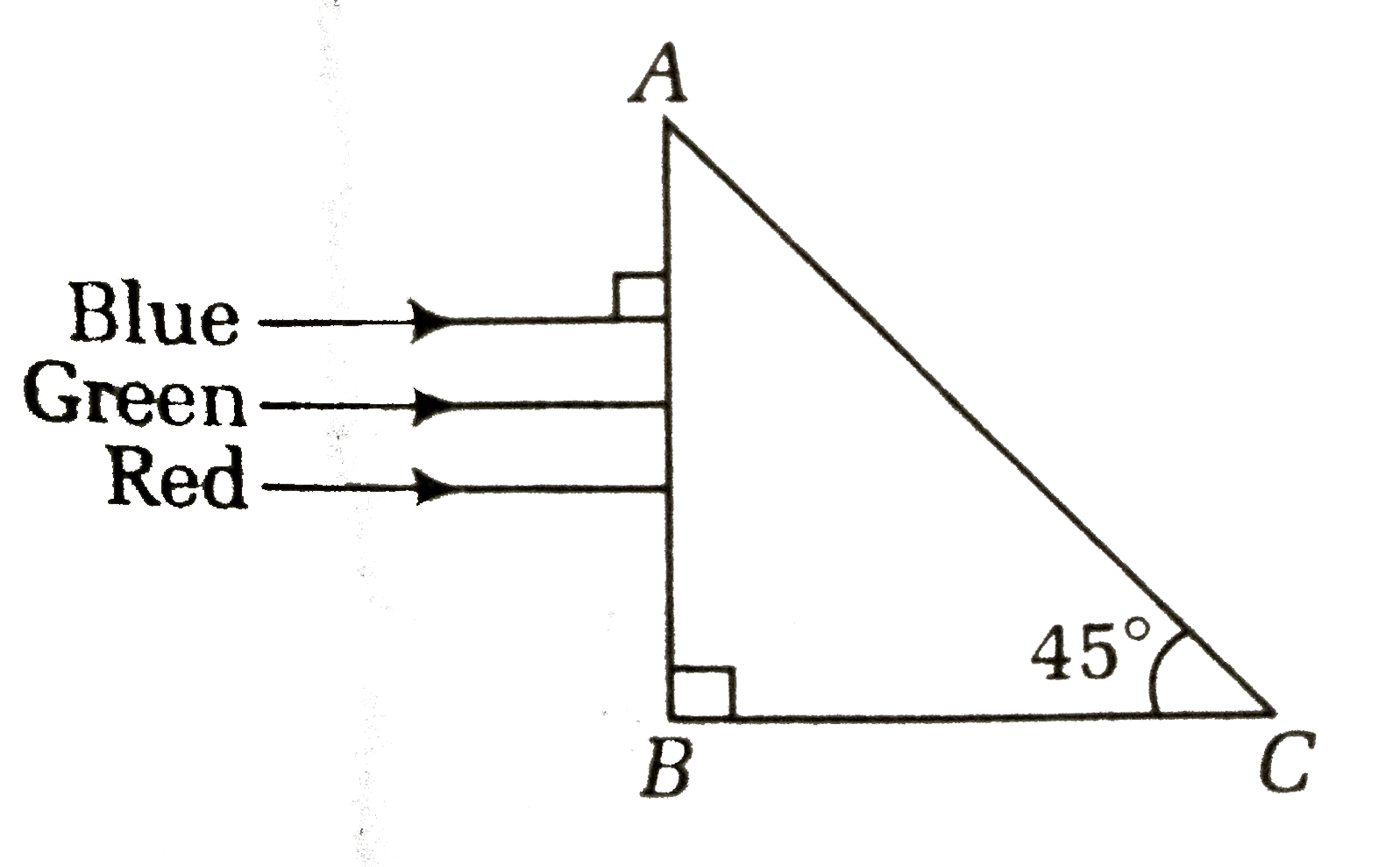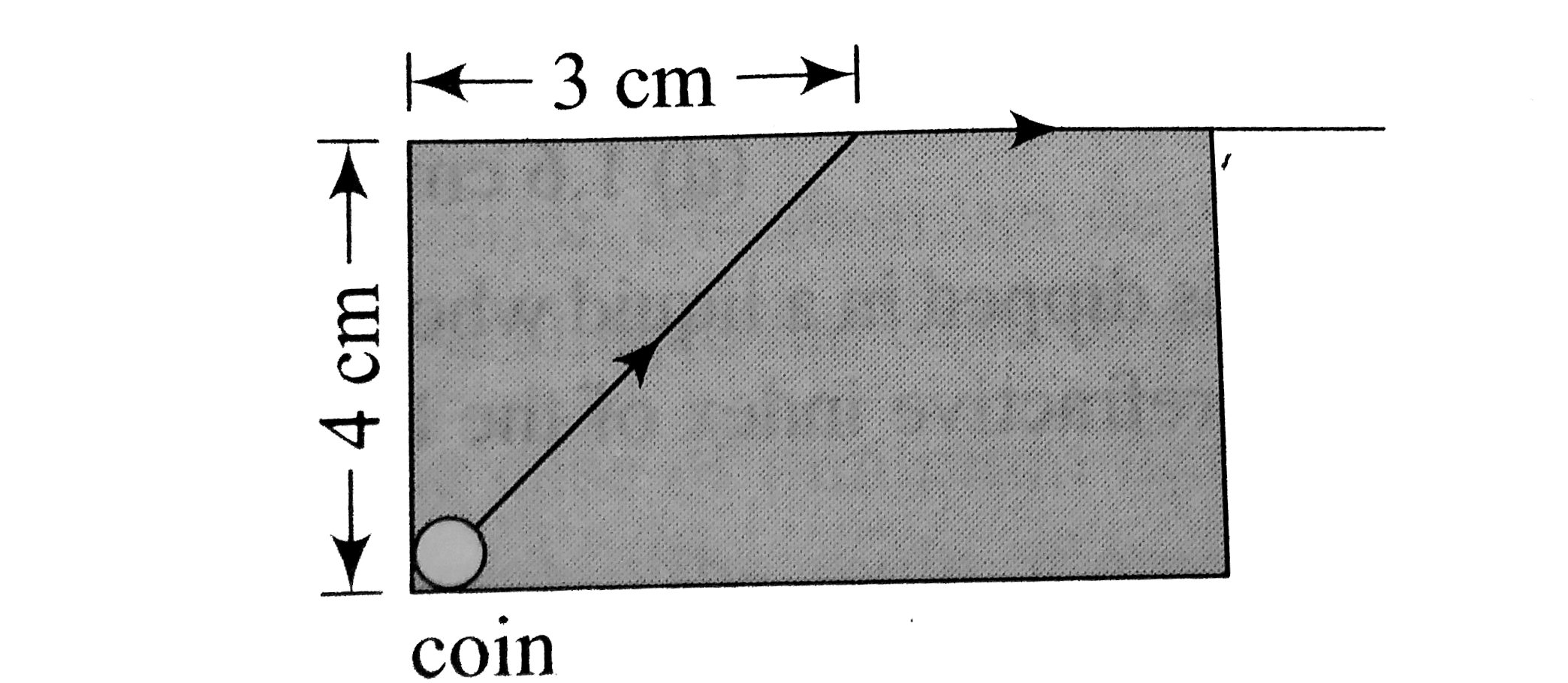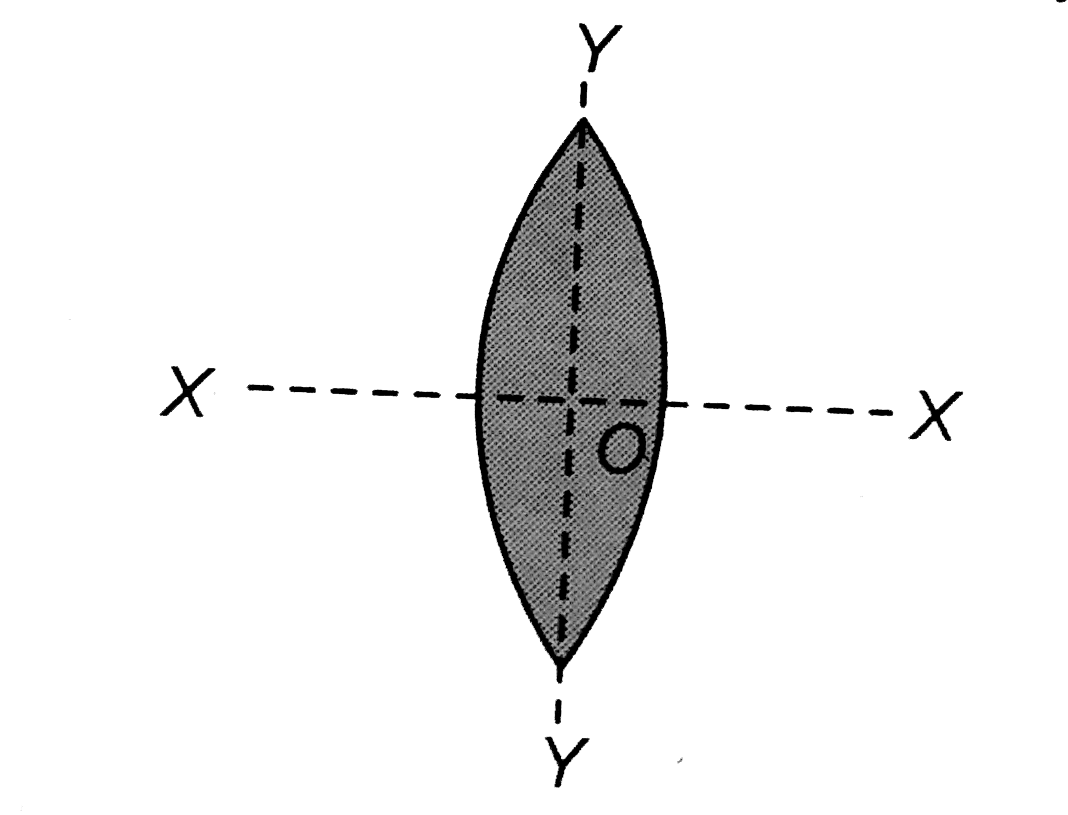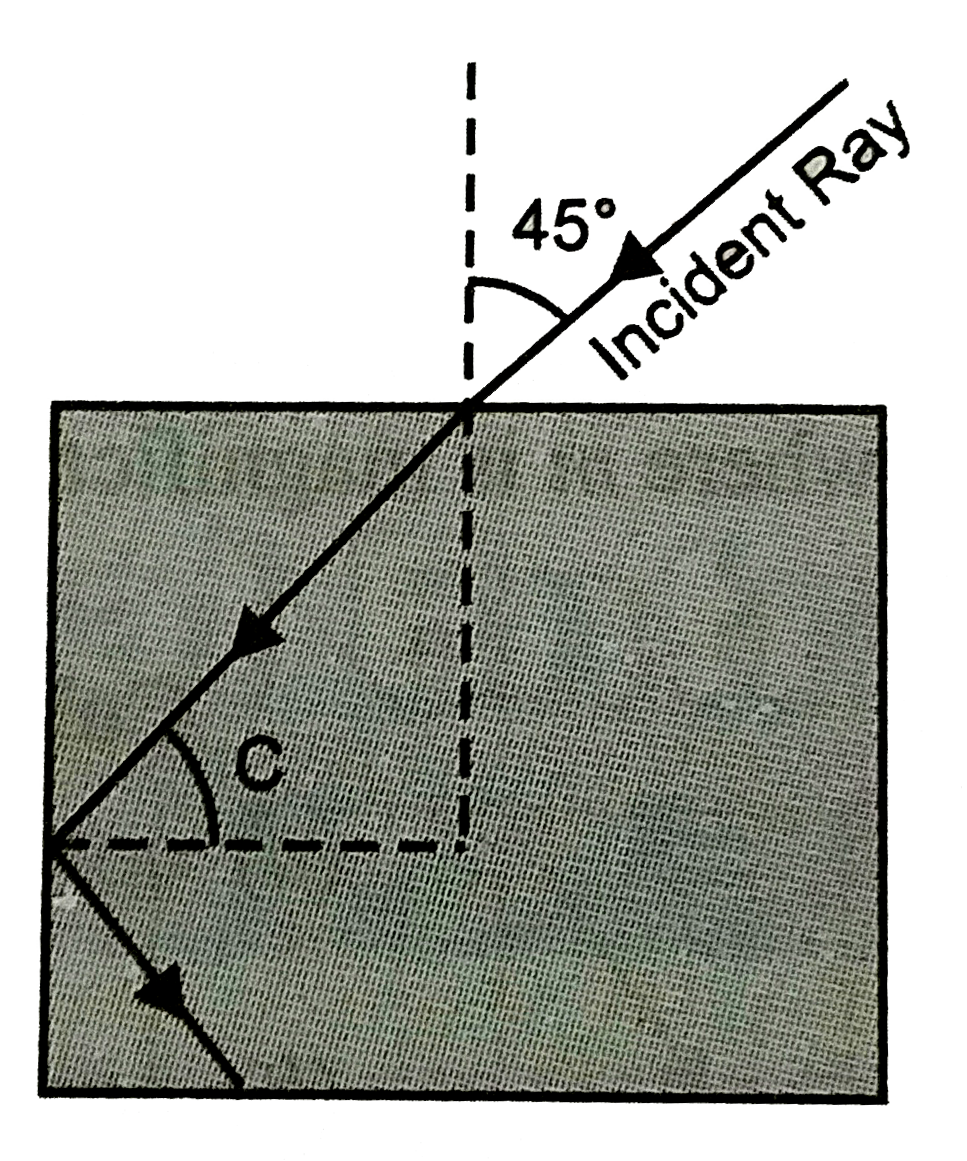Complete Solutions to All Questions of chapter OPTICS AND OPTICAL INSTRUMENTS of Class 12 book with complete answers and questions
| Class 12 | PHYSICS |
| Chapter | OPTICS AND OPTICAL INSTRUMENTS |
| NEET PREVIOUS YEAR | All Questions |
| Number Of Questions | 87 |
| Academic Year | 2023-24 |
A thin prism having refreacting angle
View SolutionThe ration of resolving powers of an optical microscope for two wavelangths
View SolutionA beam of light from a source L is incident normally on a plane mirror fixed at a certin distance x from the source. The beam is reflacted back as a spot on a scale placed just above the surce L. When the mirror is rotated through a small angle
View SolutionYoung's double slit experiment is first performed in air and then in a medium other than air. It is found than 8th bright fringe in the medium lies where 5th daek fringe lies in air. The re3fractive index of the medium is nearly
View SolutionTwo Polaroids
View SolutionThe intensity at the maximum in a Young's double slit experiment is
View SolutionIn a diffraction pattern due to a single slit of width a, the firt minimum is observed at an angle
View SolutionA astronomical telescope has objective and eyepiece of focal lenghts 40 cm 4 cm respectively. To view an object 200 cm away from the objectiv, the lenses must be speparted by a distance
View SolutionThe angel of incidence for a fay of light at a refracting sufrace of a prism is
View SolutionTwo identical glass
View SolutionAn air bubble in a glass slab with refractive index
View SolutionThe interference pattern is obtained with two coherent light sources of intensity ratio n. In the interference patten, the ratio
View SolutionA person can see objects clearly only when they lie between
View SolutionA linear aperture whose width is
View SolutionTwo identical thin planoconvex glass lenses (refractive index
View SolutionFor a parallel beam of monochromatic. Light of wavelength
View SolutionIn a double slit experiment, the two slits are
View SolutionThe refracting angle of a prism is A, and refractive index of the material of the prism is cot
View SolutionIn an astronomical telescope in normal adjustment a straight black line of length L is draw on inside part of objective lens. The eye.piece forms a real image of this line. The length of this image is I. The magnification of the telescope is
View SolutionTwo slits in Youngs experiment have widths in the ratio 1: 25.h The ratio of intensity at the macxima and minima in the interderence pattern
View SolutionA beam of light consisting of red, green and blue colours is incident on a right angled prism. The refractive index of the material of the prism for the above red, green and blue wavelengths are 1.39, 1.44 and 1.47, respectively.

View SolutionThe Young's modulus of steel is twice that of brass. Two wires of the same length and of the same area of cross section, one of steel and another of brass are suspended from the same roof. If we want the lower ends of the wires to be at the same level, then the weight added to the steel and brass wires must be in the ratio of
View SolutionLight with an enargy flux of
View SolutionA beam of light of
View SolutionIn a Young's double slit experiment the intensity at a point where tha path difference is
View SolutionAngle of prism is
View SolutionA plano-convex lens fits exactly into a plano-concave lens. Their plane surfaces are parallel to each other. If the lenses are made of different material of refractive indices
View SolutionFor a normal eye, the cornea of eye provides a converging power of
View SolutionIn Young's double-slit experiment, the slits are
View SolutionWhen a biconvex lens of glass having refractive index
View SolutionA ray of light is incident at small angle I on the surface of prism of small angle A and emerges normally from the oppsite surface. If the refractive index of the material of the prism is mu, the angle of incidence is nearly equal to
View SolutionA concave mirrorr of focal length
View SolutionThe magnifying power of a telescope is
View SolutionA biconvex lens has a radius of curvature of magnitude
View SolutionWhich of the following is not due to total internal reflection ?
View SolutionA ray of light travelling in a transparent medium f refractive index
View SolutionA lens having focal length
View SolutionA boy is trying to start a fire by focusing sunlight on a piece of paper using an equiconvex lens of focal length
View SolutionTwo thin lenses of focal length
View SolutionThe frequency of a light wave in a material is
View SolutionA small coin is resting on the bottom of a beaker filled with a liquid. A ray of light from the coin travels up to the surface of the liquid and moves along its surface (see figure ).
How fast is the light travelling in the liquid ?

View SolutionA convex lens and a concave lens, each having same focal length of
View SolutionA microscope is focused on a mark on a piece of paper and then a slab of glass of thickness
View SolutionThe angular resolution of a
View SolutionA telescope has an objective lens of
View SolutionThe refractive index of the material of a prism is
View SolutionA beam of light composed of red and green ray is incident obliquely at a point on the face of rectangular glass slab. When coming out on the opposite parallel face, the red and green ray emerge form
View SolutionA convex lens is dipped in a liquid whose refractive index is equal to the refractive of the lens. Then its focal length will
View SolutionAn equiconvex lens is cut into two halves along
Choose the correct statement from the following

View SolutionFor a given incident ray as shown in Fig., the condition of total internal reflection of ray will be satisfied if the refractive index of the block will be.
 .
.
View SolutionA body is located on a wall. Its image of equal size is to be obtained on a parallel wall with the help of a convex leng. The lens is placed at a distance d ahead of second wall, then the required focal length will be:
View SolutionThe diameter of human eye lens is
View SolutionWhich of the following pheniomeana exhibits particle nature of light ?
View SolutionA transparent cube contains a small air bubble. Its apparent distance is 2 cm when seen through other facel. If the refractive index of the material of the cube is 1.5, the real length of the edge of cube must be
View SolutionA planocovex lens is made of a material of refractive in
View SolutionA man is 6 ft tall In order to see his entire image, he requires a plane mirror of minimum length equal to
View SolutionRainbows are formed by
View SolutionThe wavelength of light of frequence
View SolutionThe refractive index of the material of prism
View SolutionAplanoconvex lens is made of material of refactive index 1.6 The radius olf curvature of the curred surface is 60 cm. The facal length of the lens is
View SolutionColoujrs of thin soap bubbles are due to
View SolutionLight enters at an angle of incidance in a tranjsparent road of refractve index
View SolutionA luminous object is placed at a distance of 30 cm. from the convex lens of focal length 20 cm. On the other side of the lens, at what distance from the lens, a convex mirror of radius of curvture 10 cm. be polaced in order to have an upright image of the object coincident with it ?
View SolutionElectromagnetic radition of frequency v, velocity v and wavelength
View SolutionAn astronomical telescope if ten -fold angular magnification has a length of 44 cm. The focal length of the objective is
View SolutionThe focal lengths of a converging lens measured for violet, green and red colours of
View SolutionIf
View SolutionOnc face of a rectangular glass plate 6 cm thick is silcerd. An object held 8 cm in front of the first face, froms an image 12 cm behind the silvered face. The refractive index of the glass is
View SolutionLight travels through a glass plate of thickness t and refractive index
View SolutionA convex lens of focal length 80 cm and a concave lens of focal length 50 cm are combined toghether. What will be their resulting power ?
View SolutionA lens if placed between a source of light and a wall. It forms images of area
View SolutionIf two mirrors are kept at
View SolutionThe hypermetropia is a
View SolutionAn echlromatic combination of lenses is formed by joining
View SolutionFocal length of convex lens will miximum for
View SolutionDeviation
View SolutionA point soujrce of light is placed 4 m below the surface of water of refractive index
View SolutionTime taken by sunlight to pass through a window of thickness
View SolutionThese is a prism with refractive index equal to
View SolutionA beam of monochromatic light is refacted from vacuum into a medium of refracticve index
View SolutionPick out the longest wavelength from the following types of radiations
View SolutionA ray is ihncident at an angle of incidence ii on one surface of a prism of small angle A and emerge normally from opposite surface. If the refractive index of the material of prism is
View SolutionRay optics is valid, when characteristic dimensions are
View SolutionInterference is possible in
View SolutionFocal length of a convex lens of refractive index 1.5 is 2 cm. Focal length of lens when immersed in a liquid of refractive index 1.25 will be
View SolutionWhich of the following phenomenon is not common to sound and light waves ?
View SolutionWhich of the following phenomenon is not explanined by Huygen's construction of wavefront ?
View Solution
All Questions questions and complete solutions for chapter OPTICS AND OPTICAL INSTRUMENTS of NEET PREVIOUS YEAR (YEARWISE + CHAPTERWISE) of Class 12